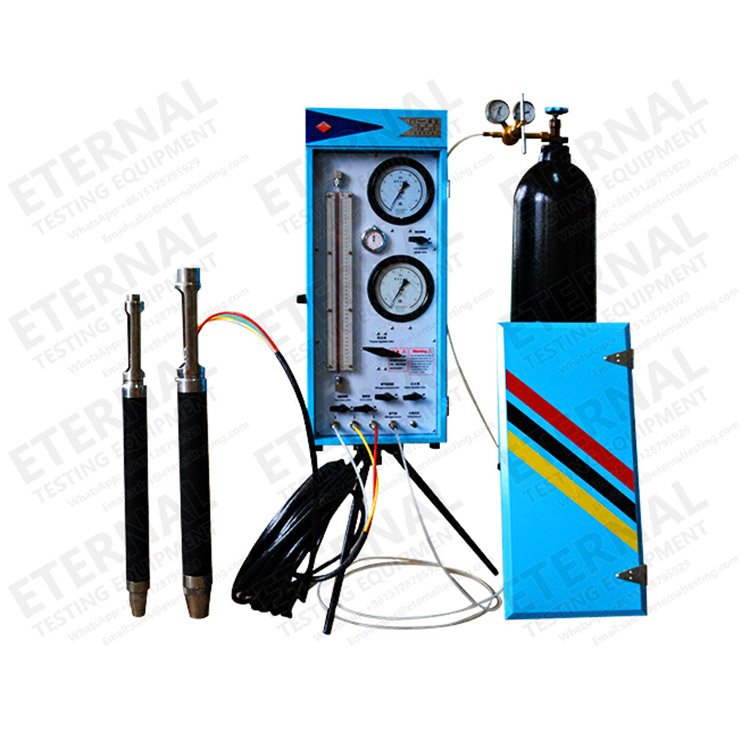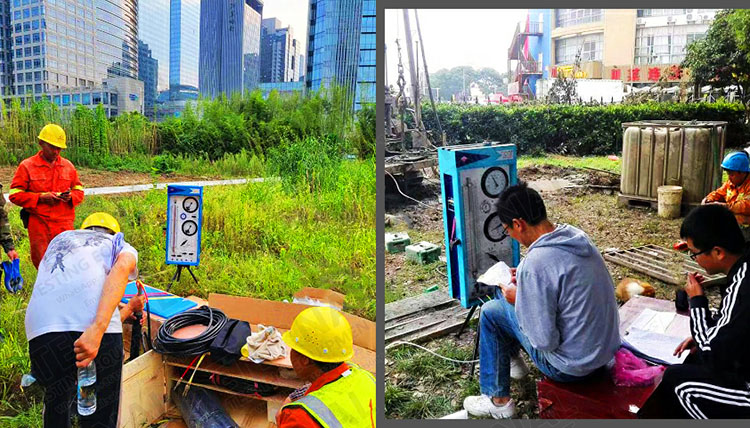Field Pressure meter
1,520.00৳
Brand Name BETTER UNITED
Model Number BTU
Place of Origin China
Customized support OEM, ODM, OBM
Warranty 1 Year
Delivery Time 5-8 work days
Use Soil test
⛟ Stock products delivery time 1-3 working days. 🔥
✈ Out-of-stock products delivery time 10-20 working days. 🚀
☎️ Contact Us for any inquiry
Category: Soil Testing Equipment
Description
Field Pressuremeter

Standard:
ISO 22476-4, ASTM D-4719-00
Description:
The pressuremeter test is an in-situ testing method used to achieve a quick measure of the in-situ stress-strain relationship of the soil. In principle, the pressuremeter test is performed by applying pressure to the sidewalls of a borehole and observing the corresponding deformation.
The pressuremeter consists of two parts, the read-out unit which rests on the ground surface, and the probe that is inserted into the borehole (ground). The original Ménard-type pressuremeter was designed to be lowered into a performed hole and to apply uniform pressure to the borehole walls by means of infl atable fl exible membrane.
As the pressure increases, the borehole walls deform. The pressure is held constant for a given period and the increase in volume required for maintaining the constant pressure is recorded. A load-deformation diagram and soil characteristics can be deduced by measurement of the applied pressure and change in the volume of the expanding membrane.
From the test readings (volume variation based on controlled pressure), a stress-strain curve can be obtained,in the case of plane deformation, which yields :
• the Ménard Pressuremeter modulus
• the creep pressure
• the Menard limit pressure
Product features:
1. The use of high-precision gas free pressure regulating valves makes the pressurization process more accurate, stable, and intuitive, thereby ensuring the accuracy of test data.
2.The unique design of the water circulation system greatly accelerates the water injection and return process of the pressure gauge, greatly shortens the test time, improves the working efficiency, and effectively improves the instrument’s control accuracy of the volume of water.
3.The pressure gauge adopts a three-chamber structure, consisting of a measuring medium chamber and two protective chambers. The function of the protective chamber is to extend the length of the soil layer tested on the hole wall; It supports the expansion of the measurement chamber, reduces the influence of the end of the measurement chamber, and produces uniform pressure on the hole wall, thereby simplifying the complex spatial strain to an approximate plane strain state.
4.The pressure gauge adopts spiral cloth winding to strengthen the protective outer membrane, which is applicable to a wider range of soil layers, greatly reducing the consumption of elastic membrane, and reducing the number of on-site replacement of elastic membrane
5. The catheter adopts customized 3-color multi bundle tube, and the inner tube is made of imported PA-11 fiber (high pressure resistant material). It has the advantages of high pressure resistance, small volume change, and is not susceptible to temperature changes. The outer skin is made of polyurethane, which has the advantages of wear resistance and earthquake resistance. The conduit connection adopts a ferrule sealing ring type connection, which is simple to install and has good sealing performance.
Specification:
| Name | Specification | ||||
| BTU-3 | BTU-4 | BTU-5 | BTU-5 (1) | ||
| Menard pressuremeter | Structure | Three-chamber | |||
| Nominal outer diameter | ø60mm | Ø74mm | |||
| Measuring chamber length | 250mm | 210mm | |||
| Total length | 800mm | 840mm | |||
| Accuracy | Min.reading of pressure gauge | 0.005Mpa | |||
| Measuring range | 400mm | ||||
| Error | ≤±1% | ||||
| Other | Max testing capacity | 2.5Mpa | 4.0Mpa | 5.5Mpa | |
| Main unit dimension | 830×360×220mm | ||||
| weight | 28kg | ||||

Shipping & Returns Policy
Shipping Information
Dhaka Only: Same-day or next-day delivery within Dhaka city limits and cost only ৳80 TAKA.
Out Of Dhaka: 1–3 working days for most locations within Bangladesh and cost only ৳120 TAKA.
Know more details.
Out Of Dhaka: 1–3 working days for most locations within Bangladesh and cost only ৳120 TAKA.
Know more details.
Return Policy
You may return items purchased from Meter BD Shop within 7 days of receiving the product.
To be eligible for a return, the product must meet the following conditions:
1. Unused, 2. In the original packaging & 3. Proof of purchase.
Be the first to review “Field Pressure meter” Cancel reply





















Reviews
There are no reviews yet.